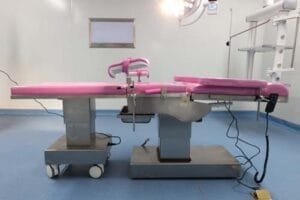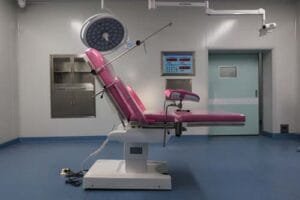Address
304 North Cardinal St.
Dorchester Center, MA 02124
Work Hours
Monday to Friday: 7AM - 7PM
Weekend: 10AM - 5PM
The safety of expectant mothers and newborns is paramount in the realm of healthcare, particularly during childbirth. Electric delivery tables have become integral in modern maternity care, offering advanced features and technology to enhance the birthing experience. In this comprehensive guide, we will explore the safety aspects of electric delivery tables, addressing concerns and shedding light on their role in ensuring the well-being of mothers and babies.
The introduction of electric delivery tables into maternity care facilities has brought about a significant shift in how childbirth is managed. These tables are equipped with advanced features aimed at improving the safety and comfort of expectant mothers. However, the central question remains: Are electric delivery tables safe for both mothers and babies?

An electric delivery table is a specialized medical device designed to support expectant mothers during labor and childbirth. It is equipped with motorized controls that allow precise adjustments for positioning and comfort. These tables have evolved from traditional manual alternatives, offering a host of advantages.
The introduction of electric delivery tables represents a crucial milestone in the evolution of maternity care. Maternity wards have transitioned from relying solely on manual tables to embracing technology-driven solutions. This shift has been driven by the desire to enhance safety, efficiency, and the overall birthing experience.
Electric delivery tables are engineered with multiple safety features to ensure the well-being of both mothers and babies.
One of the primary safety features is the presence of locking mechanisms. These mechanisms prevent unintended movements of the table during procedures, ensuring that the expectant mother remains in a stable position.
Electric delivery tables are designed with weight capacity limits to ensure they can safely support the expectant mother. This feature mitigates the risk of overloading the table, which could lead to accidents.
In emergencies, the electric delivery table is equipped with an emergency stop button. This function allows healthcare providers to quickly halt table movement, preventing potential harm to the mother or baby.
The adoption of electric delivery tables in maternity care facilities offers several benefits, contributing to the safety and well-being of mothers and babies.
Electric delivery tables excel in their ability to provide precise positioning during childbirth. This feature significantly reduces the risk of complications and ensures the safety of both mother and baby.
The comfort of the expectant mother is a priority during childbirth. Electric delivery tables are equipped with padded surfaces, ergonomic designs, and adjustable components that enhance patient comfort throughout the birthing process.
Electric delivery tables are versatile and adaptable to various maternity care scenarios. They can be used for examinations, deliveries, and even surgical procedures if needed, making them valuable assets in healthcare settings.

While electric delivery tables offer numerous advantages, there are also considerations and potential risks that healthcare facilities should be aware of.
Proper maintenance and training are essential for the safe and effective use of electric delivery tables. Regular maintenance ensures that safety features remain functional, and staff training is crucial for operating these tables correctly.
The acquisition and maintenance costs of electric delivery tables should be factored into healthcare facility budgets. While these tables offer benefits, they also require financial investment.
Scientific studies and safety data support the use of electric delivery tables in maternity care. Research has shown that these tables contribute to safer and more comfortable childbirth experiences, with minimal associated risks.
Yes, electric delivery tables are designed with multiple safety features, including locking mechanisms, weight capacity limits, and emergency stop functions, to ensure the safety of both mothers and babies during childbirth.
Electric delivery tables are primarily designed for healthcare facilities and hospitals, where they are integrated into the standard protocols for maternity care.
While electric delivery tables offer numerous benefits, proper maintenance and staff training are crucial to mitigate potential risks. Additionally, healthcare facilities should consider the financial investment required for acquiring and maintaining these tables.
In conclusion, electric delivery tables have become integral in modern maternity care, contributing to the safety and well-being of both mothers and babies during childbirth. The presence of advanced safety features, precise positioning capabilities, and enhanced patient comfort make these tables valuable assets in healthcare settings. Healthcare facilities considering the adoption of electric delivery tables should prioritize proper maintenance, staff training, and budget planning to maximize their benefits while ensuring safety.
